Chevrolet was incorporated into an existing Vauxhall showroom in Leicester and is likely to be the first of several dual franchised developments for the group, which could also include sister GM brand Saab. But while Drive doesn’t rule out acquiring other marques, it’s clear that Vauxhall is the primary focus.
“We are careful about who we associate with because we don’t want to dissipate what we already have,” says Drive joint managing director Paul Manning. “The target is to have 15-20 Vauxhall dealerships within our current structure, but if we went for too many multi-franchised sites, we would have to settle for fewer dealerships because of the increased complexity involved with manufacturer relationships, marketing and back office admin.”
Illogical spread
The illogical spread of showrooms doesn’t help. Drive’s 10 outlets do not fit the traditional model of a regional group: it has pockets of franchises in the Bristol area (three), Hampshire (two), Suffolk (two), Midlands (three) and one at Redcar in the north-east. Experts say this configuration is inefficient, lacks synergies and adds costs because of the vast distances between dealerships. So how do Manning and his MBO partner Steve Bessex manage it?
“It is more difficult than managing a regional group, but we just get up earlier to get to all the sites,” says Manning. “We lose marketing economies or parts synergies but we can cut costs in other areas because everything is with Vauxhall. We have one marketing meeting for every dealership and it’s easier to solve issues within the group because we are all Vauxhall people.”
The two MDs plan to consolidate slightly to improve control. The Clevedon (Bristol) and Farnham (Hampshire) satellites are likely to close, with customers serviced from adjacent dealerships. Staff should be taken on elsewhere within the business.

Drive Motor Retail joint managing directors Steve Bessex (left) and Paul Manning
#AM_ART_SPLIT# Financing the business
Extracting the Vauxhall business and one Kawasaki outlet from Arriva was a drawn out affair. The acquisition itself was straightforward; creating a new company from a standing start, with no head office, insurance, banking or property operations, was more complicated.
“Once Vauxhall had got their minds around the scale of the purchase, they made it very easy for us,” says Bessex. “But we had to set it all up from scratch.”
Financing came via GMAC and Vauxhall Motor Holdings. They took a stake in the new business, which Manning and Bessex intend to buy out. The share will be 50-50 by the end of the year, and the two MDs will acquire the remainder by the end of 2006.
The biggest challenge has been the IT and accountancy systems. Drive had to replace Arriva’s in-house dealer management system before the end of 2003, while disentangling the accountancy system took a further 10 months to sort out.
The group took on the Vauxhall-endorsed ADP system. Staff had to be trained to use the new DMS, even to the extent of using a mouse and Windows. “There were grooves in the table from where they were using the old system,” says Bessex.
ADP’s system provides better reporting and day-to-day management control. Previously, every site within Arriva operated as a standalone business with separate accounting that was pulled together on spreadsheets. That archaic process probably exacerbated the initial integration problems with Vauxhall.
“Vehicles had been bought by Arriva from Vauxhall but sold by us to the customer, but Vauxhall couldn’t debit or credit the right account. We had to demonstrate that they weren’t our liability,” says Manning. “It took a while to sort.”
Post-Arriva, the business is wholly motor trade-focused, rather than being part of a broader company that was better known as a bus and train operator. Bessex says there is much greater transparency, with staff better informed about future plans.
The two MDs committed £50,000 to marketing on the day they agreed to buy the business to ensure they had ready for the handover the new branding, signage, flags and stationery. “It was clear to everyone – staff and customers alike – that we had acquired the business and as a result there was no hiccup in trading performance,” says Bessex.
Non-metal revenues
Part of Drive’s strategy has been to focus on non-metal revenues. “Warranties, accessory add-ons and cash flow wasn’t on the agenda before, but it drives the business now,” says Bessex. “We are now selling more new, used and fleet cars per site. We are a more profitable business.”
Over the first eight months following the MBO, Drive made £800,000 profit. Last year, it made £1.5m; this year will be the same, on turnover of £235m, due to the cost of investing in corporate upgrades and IT.
Achieving its ambitions of 15-20 Vauxhall sites would take turnover to £350-400m, with profits above £2m.
“Vauxhall is a profitable and sustainable business model. It works better than most other franchises. The product line up is strong and we have the Network Q and MasterFit brands for used cars and aftersales,” says Manning.
“Vauxhall dealerships tend not to be over-facilitized, unlike Ford dealerships, which are geared for 30% market share. Our facilities are appropriate for our market share.”
However, return on sales is still only around 1%. “We are 1% away from being a charity,” adds Manning.
He claims that every dealership is outstripping Vauxhall’s national 13% market share. Now the focus is on aftersales, with an eye on the trends for longer servicing intervals and improved car reliability.
Manning and Bessex have charged their teams with raising communication, in particular between technicians and customers. The intention is to speed up work, reduce costs and improve satisfaction.
“We want people who can multitask,” says Bessex. “We’ve introduced the concept into two dealerships and will roll it out to the rest this year.”
A call centre will open later this year at the Bristol city centre site. This will issue MoT reminders, service calls and follow ups on new and used car sales. The £250,000 investment is expected to pay for itself immediately, and turn a profit every year. “We’ve spent a long time going through the transitional period. Now we are ready to grow,” says Manning.
“We want to be recognized as the dominant and most respected motor retailer in all our market areas.”
#AM_ART_SPLIT# The Business
Name: Drive Motor Retail
Key executives: Steve Bessex, Paul Manning, joint managing directors
Turnover (2005): £235m est
Profit (2005): £1.5m est
New car sales (2005 est): 4,000
Fleet car sales: 10,000
Used car sales (2005 est): 8,000
No of sites: 11 (one dual franchised, one Kawasaki motorcycle dealership)
No of employees: 800
Key franchises: Vauxhall, one Chevrolet
Towbars and tents add profit
Towbars: not the most interesting or profitable items, right? Wrong! They might not strike you as a great money earner, but Leicester-based Drive Leisure, part of Drive Motor Retail, has turned towbars into a multi-million pound turnover business.
As Britain’s biggest distributor of market-leading towbar brand Witter, Drive has five wholesale operations and distributes through six main dealers.
“We started out in Leicester in 1983 as BB Motor Factors. Through constant growth we now have sites in Aldershot, Bury St Edmunds, Leicester, Leamington Spa and Bristol. We now sell in excess of 30,000 units a year; it is a very successful business,” says Peter Smith, parts manager, Drive Aldershot.
Smith admits the business represents an unusual synergy between typical franchise activity and the aftermarket, but that it is a model which works well.
He says: “We have always avoided selling items that could make us clash with manufacturers, which is why we went down the leisure route. And during the time when we were part of Arriva, we extended our reach through multi-franchise exposure.”
Towbars are not the only unusual item to be found flying off the shelves at Drive’s leisure division. From pushbikes and tents to electric fans and gazebos, it’s an eclectic mix of products. “We took a chance and we’ve been absolutely gob smacked by demand,” says Smith. “We sold 1,200 pushbikes last year.”
In a tough market, dealers need to adopt an entrepreneurial spirit. Drive’s diverse product lines represent a ‘foot in the door’ that could led to additional business for the group. It also maximizes utilization of delivery vans and offers the chance to raise profits.

Sales for Vauxhall have steadily increased, helped by the introduction of the Zafira in 1999 (210,000 sold in the UK so far), the Corsa and the enduring Astra. The dip at the end of the chart is due to part-year results

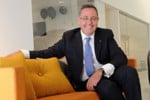

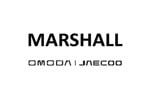
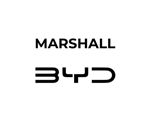

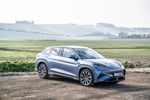
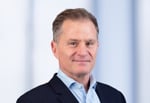

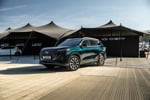


Login to comment
Comments
No comments have been made yet.